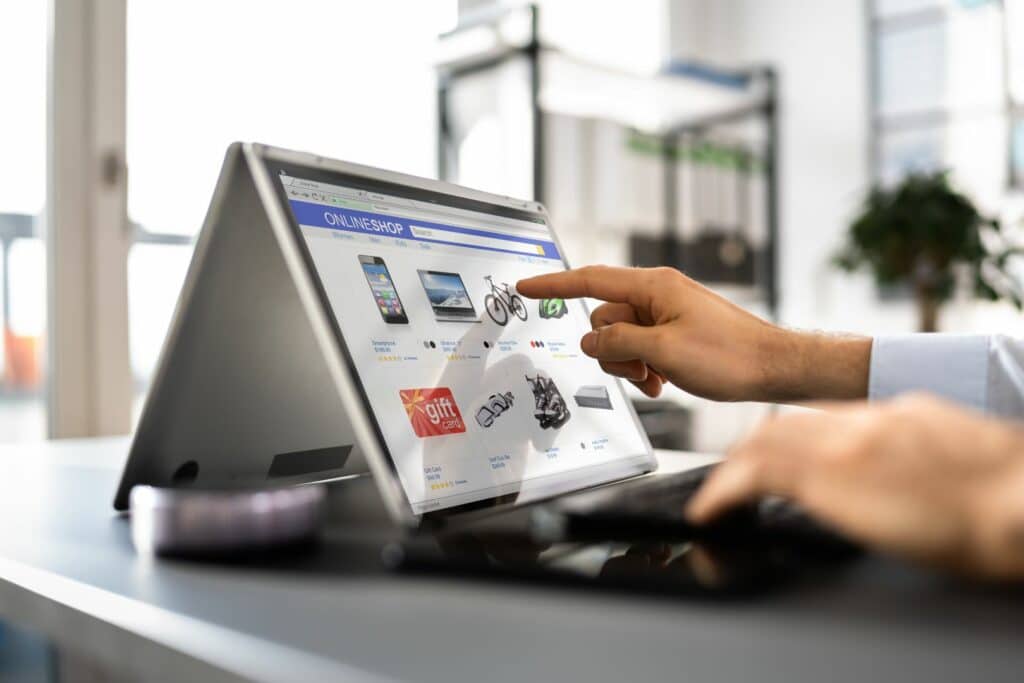Since building relationships via digital channels is playing an increasingly important part in our lives the questions ‘what is a DXP?’ and ‘what is a DXP for?’ have become increasingly important.
A digital experience platform or DXP allows you to compose, manage, deliver and optimise your customers’ digital experiences. A DXP will provide an integrated suite of tools to support two-way communication with customers, prospects, partners, employees, and suppliers.
Why do businesses need digital experience platforms?
You might think that digital conversations are easy to start and maintain but coordinating high quality consistent content via multiple channels is a complex process.
When you are engaging with customers on websites, via email, with mobile apps, on social media, virtual and augmented reality devices, in-store kiosks, digital signage, and point of sales (POS) systems, you need to provide coherent experiences.
The average number of devices and connections per person globally was 2.4 in 2018 and is expected to rise to 3.6 in 2023. Most people will use multiple devices when making a purchase and your content must create consistent and connected experiences at each touchpoint.
The journey to DXP
Content management systems (CMSs) were available in the early 1990s and were originally used to create static online brochures and catalogues. However, people quickly realised the potential of dynamic online content.
As social media became more prevalent user-generated content created and shared using mobile devices drove new levels of customer expectations. Businesses needed to develop personalised engagement and systems integration was needed to improve digital experiences, leading to the development of web experience management (WEM) solutions.
WEM allowed engagement data to be collected, helping to create personas that could be used to develop more personalised content. However, focusing on marketing requirements meant that there was little connection with other business systems such as enterprise resource planning (ERP) and customer relationship management (CRM), leading to fragmented customer journeys.
As the need for deeper integration grew a new approach using microservices and a headless architecture was recognised as a potential solution. Integration with other business systems provided better customer experiences and businesses could track leads, convert them to sales and build customer loyalty. It also allowed developers to innovate, test and implement new approaches more quickly and easily.
This led to what we now call digital experience platforms that provide fully integrated journeys across multiple channels and devices.
What are DXPs offering next?
As people become better informed through online research and buying via ecommerce websites and marketplaces consumers have become more influential. Their expectations now apply to purchasing products for business, personal shopping, and interactions with their employers too. This includes fast responses and in-depth understanding of their needs, which are becoming more important that product or price.
Your customers’ behaviour is also changing as they become more digitally empowered. A simple online search leading to a website and then a sale is becoming less common as people use multiple devices at different times during their purchasing journey. As a result, businesses need to find new ways to provide the right content at the right time. To do this, teams need to be aligned to customer needs, processes must be streamlined, and systems connected.
Digital transformation
In addition to providing the integrated tools for audience engagement, digital experience platforms support the organisational transformation needed to improve customer experiences.
Although your customers’ journeys can be tracked across channels more effectively than ever, digital transformation requires changes in organisational behaviour. Operational silos must be connected, teamwork needs to be redefined, and agile methodologies must be created to provide feedback loops for continuous evaluation and improvement.
A digital experience platform provides a framework that will allow this to happen. A DXP provides a central hub for collaboration and development and an infrastructure for collecting and connecting data from each channel. With intuitive dashboards and machine-learning driven insights and suggestions, they can provide a deeper understanding of your customers.
Implementing a digital experience platform
Creating unique digital experiences is an ongoing process of analysis, innovation, testing and iteration. The journey will be different depending on the digital maturity of your organisation and your customer requirements.
The speed of technological change is increasing, so organisations that haven’t already started their digital transformation journey run the risk of falling behind their competitors.
To improve customer engagement, your DXP must scale easily in the cloud, have a powerful application programming interface (API) for flexible customisation and use artificial intelligence (AI) to tag content, identify new trends, create customer segments and automate processes.
At the same time content delivery and data collection can be enhanced through digital asset management and collaborative creation that is fully integrated into your business operations. A single platform can consolidate and future-proof streamlined processes that will support a shift to a customer-centric culture.
Begin the digital experience journey today
Williams Commerce has always taken the long view of digital transformation. We take time to understand our customers’ systems and how they work together as well as the pain points they are experiencing. Our team of business system architects and analysts help our customers identify, plan and achieve digital transformation throughout their organisation.
Talk to one of our experts today to begin your digital transformation journey.








